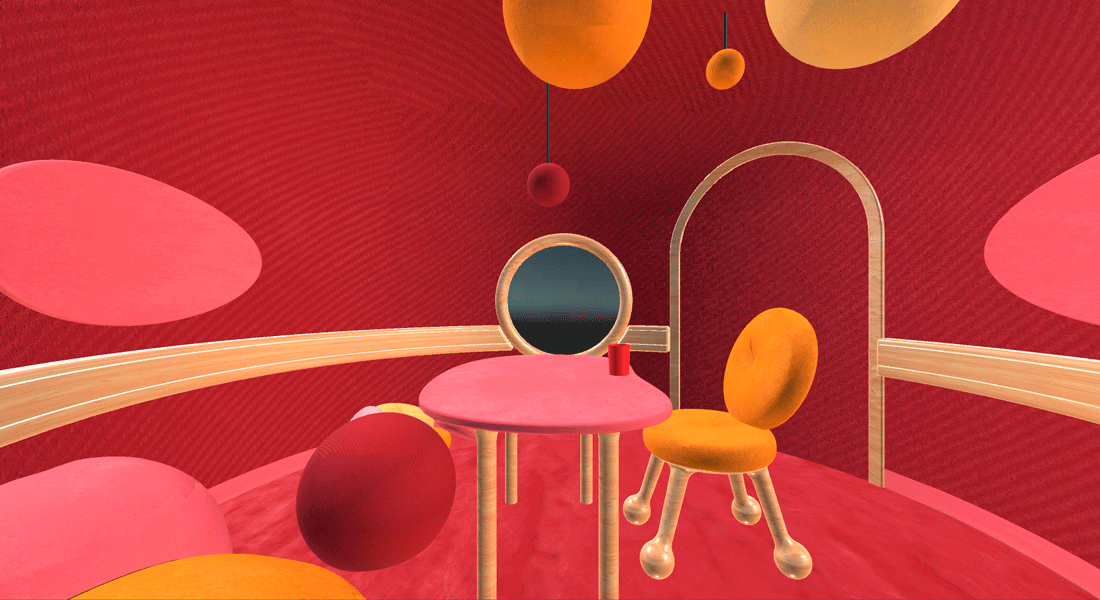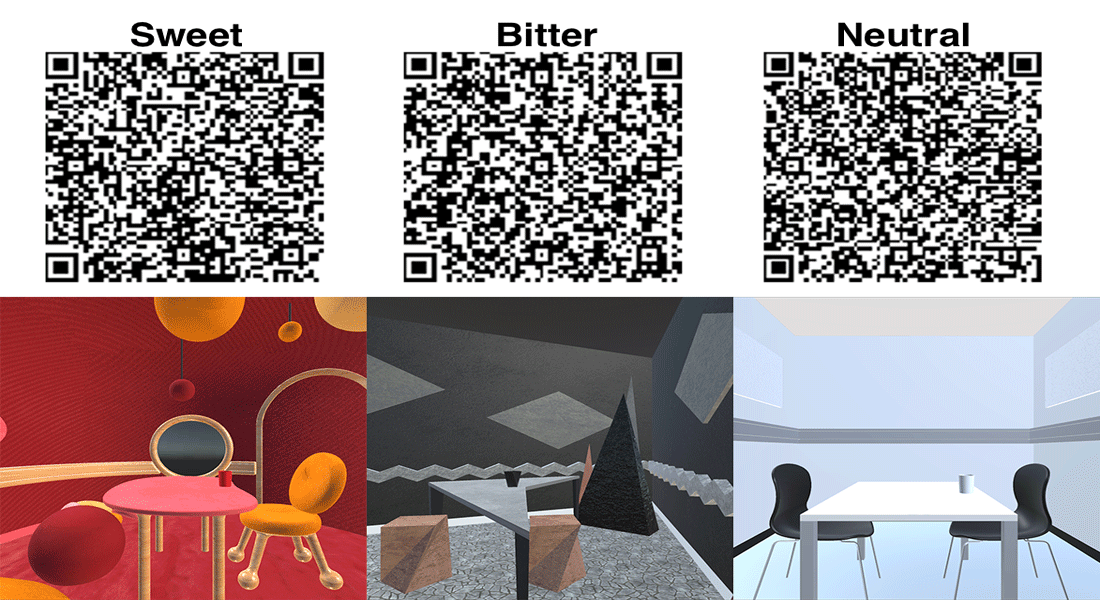Sweet taste is enhanced if the surroundings "look sweet"
A sweet drink tastes even sweeter if you drink it in surroundings that are also visually associated with sweetness. This is shown in a new study from the Future Consumer Lab at the Department of Food Science at the University of Copenhagen. The visually sweet surroundings were created using Virtual Reality.

The study from the Future Consumer Lab shows that on average, a sweet drink tastes 13% sweeter if you drink it in a "visually sweet" environment rather than a "visually bitter" environment and a "visually neutral" environment (see photos of environments).
“The study showcases the new possibilities for consumer and sensory research at hand. It helps us understand how perceptions of taste result from a complex network of environmental cues, and suggests that acting on such cues can eventually influence the way new products are accepted or rejected,” says associate professor Armando Perez-Cueto from the Future Consumer Lab at the Department of Food Science, University of Copenhagen.
In other studies, visual factors such as shape and color have been shown to have an effect on how sweet we perceive sweetness. For example, roundness is associated with sweetness, while perpendicular shapes are associated with bitterness, saltiness and sourness. Red and pink are associated with sweetness, while black is associated with bitterness. Some studies indicate that it is the contrast between the color of the food and the background color that changes the perception of the taste, and in one study, for example, a pink strawberry mousse was rated 15% sweeter when served on a white plate than if served on a black plate.
In the present study, the researchers created the visually sweet environment and the visually bitter environment using Virtual Reality, while the visually neutral environment was the real environment of Future Consumer Lab's testing room.

The Virtual Reality environments are created by Yang Chen from the Future Consumer Lab at Department of Food Science, University of Copenhagen, and Arya Huang from Royal College of Art, London.
The environments can be downloaded by using the QR-codes.
“Nowadays, a growing number of immersive technologies are adopted in households and the commercial world, which enables Virtual Reality / Augmented Reality to become an effective medium for digital behavior interventions. For examples, sweetness specific VR environments can be applied to reduce sugar consumption without compromising the taste experience,” says PhD Student Yang Chen from the Future Consumer Lab, UCPH FOOD.
Immersive technologies may help us to create the ultimate eating experience
The participants in the experiment did not think that the sweet taste made the drink taste better, which was a surprise to the researchers, since sweetness is typically a preferred taste in consumers.
“Visual experience is only a facet of how we perceive the world around us. Research has shown that auditory, tactile and olfactory senses also influence our flavor perception. It would be interesting to see how individual’s flavor perception can be shaped in a completely immersive environment with taste specific visual environment, soundscape, tactile experience and olfactory stimulations. It all sounds a bit odd for real life, but maybe this will be how we create the ultimate eating experience – eating healthy food with pleasure – in the future,” says Yang Chen.
The study was conducted in collaboration with the Royal College of Art, London and the Virtual Learning Lab at University of Copenhagen.
There were 41 participants in the study - 24 women and 17 men.
Read more about the research in the Future Consumer Lab and see the facilities.
Topics
Related News
Contact
PhD student Yang Chen, Department of Food Science at the University of Copenhagen (UCPH FOOD), yangchen@food.ku.dk
Associate professor Armando Perez-Cueto, UCPH FOOD, apce@food.ku.dk
Communications officer Lene Hundborg Koss, UCPH FOOD, lene.h.koss@food.ku.dk
Facts
Authors: Yang Chen, Arya Xinran Huang, Ilona Faber, Guido Makransky and Federico J. A. Perez-Cueto.
